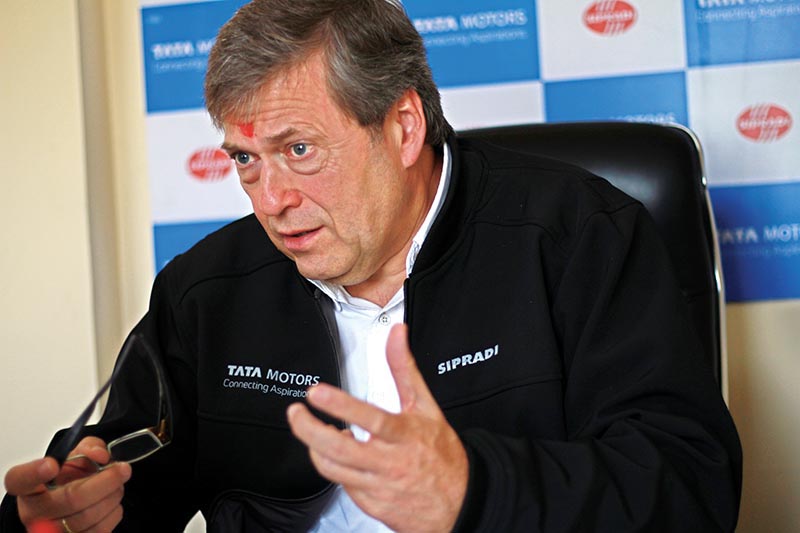‘We expect to become more powerful and visible in the passenger vehicle segment’
Guenter Karl Butschek, CEO and Managing Director of Tata Motors, recently visited Nepal to inaugurate Tata’s global service camp in the country. In conversation with THT Auto Plus’ Waro Basnet, the industry expert details Tata’s plans for the global market
How do you see the Nepali auto market?
Nepal has become a strong market, though we saw a drop in the last couple of years. Despite the drop, we have effectively been able to maintain and even grow our market share in certain segments. So, from Tata’s point of view, we consider Nepal one of the strongest
international markets.
What is Tata’s position in the global automobile market?
As you might know, we have lost a significant portion of the market share over the last five years. There are actually a couple of reasons behind it — one was that we didn’t provide products with the right solutions to our customer in the commercial vehicle segment, and the other was due to the lack of demand. But in the fiscal year 2017-18, we had a very strong recovery in terms of products and their application. We have actually regained market share and grown in volume of sales. In our most important international markets, which also includes our neighbouring countries like Nepal, we have seen signs of recovery, though not as strong as required.
Does Tata have any new models in the pipeline?
There are plenty of new models in the pipeline. We have just handed over the keys for the first Tata Marcopolo bus called Magna. And we have a lot of other products coming to the Nepali market as well. Our new pickup truck ‘Yodha’ is very strong in the market but now we are going to bring a four-by-four which sees high demand in the Nepali market.
Is Tata planning a shift to hybrid and electric vehicles?
We actually come from a very strong diesel background. But we all expect the shift to most probably occur stepwise, from diesel to petrol, from petrol to hybrid, and hybrid to electric. The message we get from the government is a different one because India’s new FAME incentive scheme no longer provides any incentives for hybrid vehicles. It only gives incentives on electric. We have already got this message a year ago, although we have not been active in selling electric vehicles until a couple of weeks ago. We have been engaged in investing and developing electric technology in the past. We now have a full range of products and very credible and cost-attractive electric power train solutions for the Indian market. Once we bring our electric power train solutions to India, as we are going to do next year, we will also introduce them to other countries.
What is your larger vision for Tata?
At the end of fiscal year 2018-19, we want to be number three globally for both commercial and passenger vehicles. We will also be working on cost reduction in order to improve our cost competitiveness, which is going to give us the opportunity to actually provide unique technical solutions to local and international markets in a much shorter period of time. We expect to become much more powerful and visible in the passenger vehicle segment in global markets.





